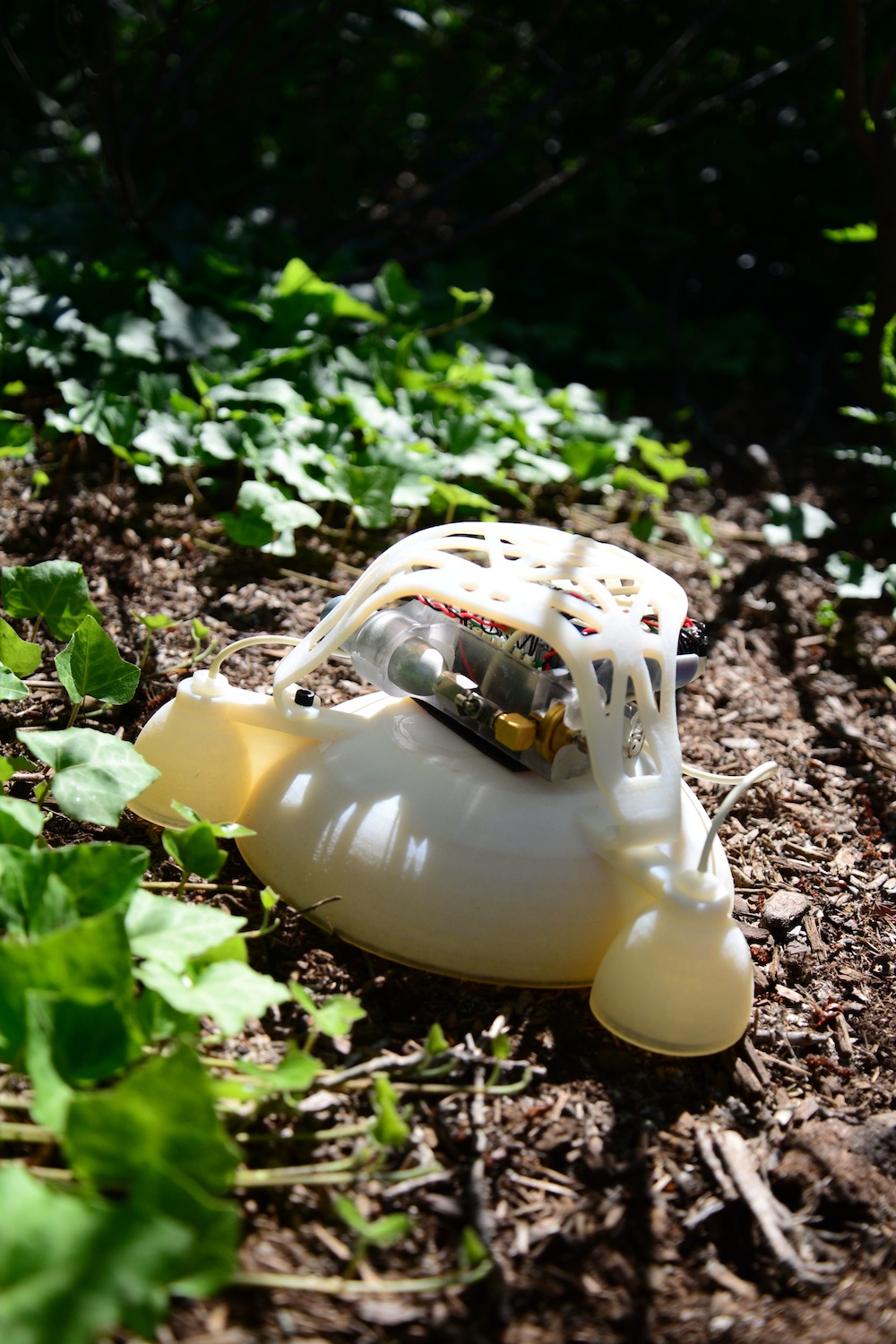
Conventional Rigid Design
The kind of robots most people have been seeing recently look rather similar. Humanoids, rovers, and most other kinds of robots all typically follow the convention of hard design with their hard shells. However, the machines can be limited by their own rigidity; they crash when they fall and cannot easily pass obstacles. Roboticists have recently been designing soft robots and now, researchers have crafted a leaping robot with both soft and hard design.
The Hybrid Bot
The team designed a leaping, three-legged, 2.1 pound, 3-D printed robot inspired by an octopus’ soft body with gradual transition to hard beak. The bot has a soft belly that can flex and an upper hemisphere with nine layers—the hardest layer being 1000 times harder than its softest one. Another design the researchers pioneered was the machine’s motion. It uses combustion to flex its belly forcefully, essentially catapulting itself. These jumps are powerful; it can reach a height six times taller than itself is.
A New Generation
This innovative hybridization will help lead to “a new generation of fast, agile robots that are more robust and adaptable than their predecessors and can safely work side by side with humans,” expresses Michael Tolley, co-lead author of the research and UCSD roboticist. This work could be in disaster sites and areas otherwise difficult to maneuver in, as the hybrid’s mobility is much better than its wheeled or clumsy bipedal contemporaries. The other lead author, Harvard roboticist Nicholas Bartlett highlights another possibility, saying, ”One wild potential application would be in space — on the moon or Mars or other planets.” Wherever this leaping machine ends up, it’s poised to rapidly change the field of robotics.
Sources: LiveScience, UCSD News
Images: LiveScience, UCSD News
